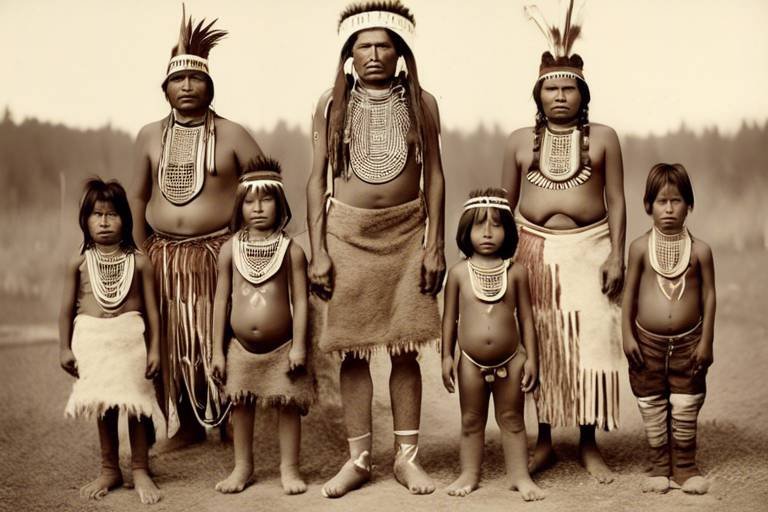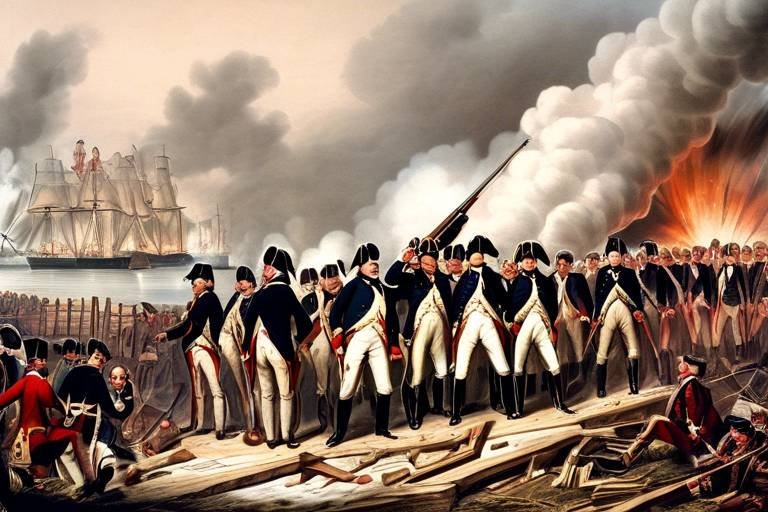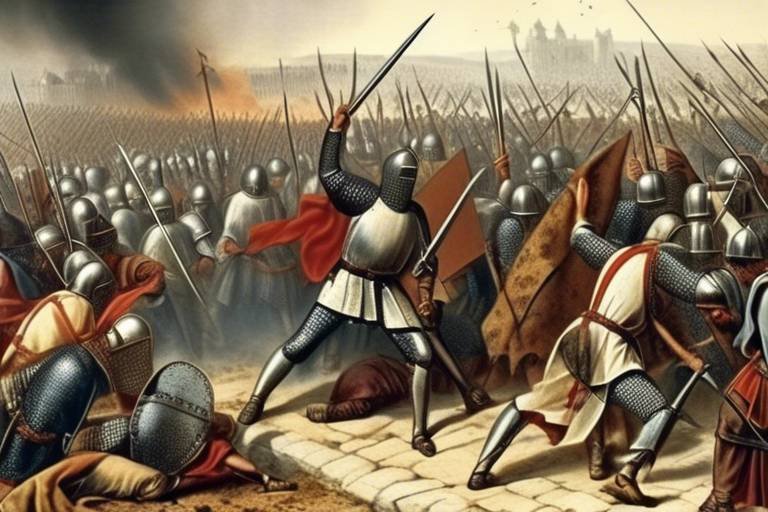The Historical Context of the Cold War
The Cold War was a period of intense geopolitical rivalry between the United States and the Soviet Union, characterized by ideological differences, military build-up, and global power struggles. Emerging from the aftermath of World War II, this era of tension had profound implications for international relations and shaped the modern world as we know it.

Origins of the Cold War
The origins of the Cold War can be traced back to the aftermath of World War II, where the once united front against Nazi Germany dissolved into a deep-seated rivalry between the United States and the Soviet Union. The ideological differences between the capitalist West, led by the US, and the communist East, represented by the USSR, set the stage for a prolonged period of tension and suspicion.
As the war drew to a close, the division of Europe into Western and Eastern blocs became increasingly apparent. The Soviet Union sought to expand its sphere of influence in Eastern Europe, establishing communist governments in countries like Poland, Hungary, and Czechoslovakia. This expansionism clashed with the Western powers' commitment to democracy and free-market capitalism, creating a volatile geopolitical landscape.
The competition for dominance was not limited to Europe but extended to other regions as well. The US implemented the Marshall Plan to rebuild war-torn Western Europe and contain the spread of communism, while the Soviet Union supported communist movements in Asia, Africa, and Latin America. This global struggle for influence and power laid the foundation for the Cold War.
The onset of the Cold War was marked by mutual distrust, espionage, and the formation of military alliances such as NATO and the Warsaw Pact. The arms race between the superpowers escalated rapidly, with both sides developing nuclear weapons capable of unprecedented destruction. The fear of mutually assured destruction loomed large, shaping the strategic calculations of both the US and the USSR.
While the origins of the Cold War are multifaceted, at its core, it was a clash of ideologies and interests between two superpowers determined to shape the post-war world according to their respective visions. The legacy of this ideological struggle continues to reverberate in contemporary international relations, underscoring the enduring impact of the Cold War era.

Key Players in the Cold War
The Cold War was a complex geopolitical conflict that involved various key players, each contributing to the shaping of global politics during the mid-20th century. At the forefront of this rivalry were the United States and the Soviet Union, two superpowers with opposing ideologies and ambitions. The United States, representing the capitalist West, sought to promote democracy and free-market economies, while the Soviet Union, representing the communist East, aimed to spread socialism and establish communist regimes.
These two superpowers engaged in a prolonged struggle for influence and dominance, utilizing military alliances, economic aid, and propaganda to advance their respective agendas. The United States formed alliances such as NATO (North Atlantic Treaty Organization) to counter the spread of communism, while the Soviet Union established the Warsaw Pact to maintain control over Eastern European countries.
While the United States and the Soviet Union were the primary players in the Cold War, other countries and regions also played significant roles in this global conflict. Countries like China, Cuba, and Vietnam aligned themselves with either superpower, further intensifying the ideological divide and contributing to proxy wars in different parts of the world.
The Cold War also had a profound impact on regions such as Eastern Europe, where countries like East Germany, Poland, and Hungary became battlegrounds for ideological struggles and political upheaval. The division of Germany into East and West symbolized the broader tensions between the capitalist and communist blocs.
Furthermore, the Middle East, Latin America, and Asia became arenas for geopolitical competition between the United States and the Soviet Union, as both superpowers sought to exert influence and control over strategic resources and territories.

Global Impact of the Cold War
The Cold War had a profound global impact that reverberated across continents, influencing international relations, military strategies, and economic policies on a monumental scale. The rivalry between the United States and the Soviet Union extended far beyond their borders, shaping the course of history for decades to come.
One of the most significant consequences of the Cold War was the emergence of proxy wars, where conflicts in various regions became battlegrounds for the superpowers' ideological struggles. Countries in Asia, Africa, and Latin America found themselves caught in the crossfire, with devastating effects on their societies and political structures.
The Cold War also sparked a nuclear arms race between the United States and the Soviet Union, leading to the proliferation of weapons of mass destruction and the constant threat of nuclear annihilation. The specter of mutually assured destruction loomed large, shaping military doctrines and global security policies.
Furthermore, the division of the world into East and West blocs created a geopolitical landscape defined by alliances and rivalries. The formation of military alliances such as NATO and the Warsaw Pact solidified this division, with countries aligning themselves based on their ideological leanings.
The economic repercussions of the Cold War were equally significant, with both superpowers engaging in economic warfare and trade embargoes to exert influence and pressure on their adversaries. The global economy became intertwined with political considerations, leading to economic instability and uncertainty in many parts of the world.
In addition to these direct impacts, the Cold War also had indirect consequences on cultural exchange, scientific cooperation, and technological advancements. The space race, for example, spurred innovation in space exploration and satellite technology, leading to significant breakthroughs in science and engineering.
Overall, the global impact of the Cold War cannot be overstated. It fundamentally altered the course of history, shaping the modern world in ways that continue to be felt today.

Cold War Ideologies
The Cold War was a period of geopolitical tension between the Soviet Union and the United States, shaping global politics from the end of World War II to the early 1990s. Understanding its historical context is crucial for comprehending modern international relations.
The Cold War's roots can be traced back to the ideological differences between the capitalist West and the communist East following World War II. Competing interests and spheres of influence fueled the conflict.
The Cold War was primarily a struggle between the United States and the Soviet Union, with both superpowers vying for dominance on the global stage. Other countries and regions also played significant roles in this geopolitical rivalry.
The Cold War had far-reaching consequences, shaping international relations, military strategies, and economic policies worldwide. It led to proxy wars, nuclear arms races, and the division of nations into blocs.
The clash between capitalism and communism defined the ideological battleground of the Cold War. The belief systems of the superpowers influenced their foreign policies, alliances, and propaganda efforts during this era.
The Cold War spurred rapid advancements in technology and innovation, particularly in the fields of military weaponry, space exploration, and intelligence gathering. These developments had lasting effects on society and warfare.
Beyond politics and military conflicts, the Cold War influenced popular culture, societal norms, and individual freedoms. The era was marked by espionage, propaganda, and a pervasive sense of fear and suspicion.
The Cold War came to a symbolic end with the fall of the Berlin Wall in 1989 and the dissolution of the Soviet Union in 1991. This marked a significant shift in global power dynamics and geopolitical relationships.
The legacy of the Cold War continues to shape international relations and security policies in the 21st century. Its impact on diplomacy, military strategies, and regional conflicts remains relevant in today's world.
During the Cold War, **capitalism** and **communism** stood diametrically opposed, serving as the pillars of ideological conflict. The capitalist West, led by the United States, championed free-market economies, individual liberties, and democratic governance. On the other hand, the communist East, represented by the Soviet Union, advocated for state-controlled economies, collective ownership of resources, and one-party rule.

Technological Advancements in the Cold War
The Cold War era was not only characterized by political tensions and military standoffs but also by rapid technological advancements that shaped the course of history. Both the United States and the Soviet Union engaged in a technological arms race, each striving to outdo the other in various fields.
One of the most significant technological advancements during the Cold War was the development of nuclear weapons. The creation of atomic bombs by both superpowers led to a dangerous escalation of the arms race, with each side stockpiling increasingly powerful and destructive weapons.
Space exploration also became a key battleground for technological supremacy during the Cold War. The Soviet Union's launch of Sputnik, the first artificial satellite, in 1957 marked the beginning of the space race. This event spurred the United States to invest heavily in its own space program, culminating in the historic moon landing in 1969.
The Cold War era saw major advancements in communication technology as well. The development of secure communication systems, such as encrypted telecommunication networks, played a crucial role in espionage and intelligence gathering efforts by both superpowers.
In the field of aviation, the Cold War spurred innovations in aircraft design and capabilities. The introduction of supersonic jets and stealth technology revolutionized military aviation and reconnaissance, giving each side a strategic edge in aerial warfare.
The era also witnessed significant advancements in computer technology and cyber warfare. Both the United States and the Soviet Union invested heavily in developing sophisticated computer systems for military purposes, laying the groundwork for modern cyber warfare tactics and strategies.
Overall, the technological advancements of the Cold War era had a profound impact on society, shaping not only military strategies but also civilian life. The legacy of these innovations continues to influence modern technology and security practices, highlighting the lasting impact of the Cold War on the world.

Cultural and Social Impact of the Cold War
The Cold War era was not just about political maneuvering and military posturing; it also had profound cultural and social impacts that reverberated across societies worldwide. The intense rivalry between the United States and the Soviet Union seeped into every aspect of life, shaping the way people thought, behaved, and interacted.
One of the most significant cultural impacts of the Cold War was the rise of espionage and spy fiction in popular culture. Movies, books, and television shows romanticized the world of spies, creating a sense of intrigue and mystery around intelligence operations. The image of the suave secret agent became iconic, reflecting the heightened sense of surveillance and suspicion during the era.
Propaganda was another key element of the cultural landscape during the Cold War. Both superpowers engaged in extensive propaganda campaigns to promote their ideologies and discredit their adversaries. This led to a proliferation of propaganda posters, films, and literature that sought to influence public opinion and shape perceptions of the enemy.
The Cold War also had a profound impact on societal norms and individual freedoms. The fear of communism and the specter of nuclear war instilled a sense of paranoia and anxiety in people, leading to increased censorship and surveillance. The McCarthy era in the United States, with its witch hunts for alleged communists, is a stark example of the erosion of civil liberties during this period.
Furthermore, the division of the world into opposing blocs during the Cold War had lasting social consequences. Countries aligned with either the United States or the Soviet Union often found themselves torn between loyalty to their allies and the desire for independence. This geopolitical division permeated society, influencing everything from education to cultural exchanges.
In conclusion, the cultural and social impact of the Cold War was far-reaching, shaping the mindset and behavior of entire generations. The legacy of this era continues to influence contemporary society, reminding us of the enduring effects of a conflict that transcended mere politics and military strategy.

End of the Cold War
The end of the Cold War marked a significant turning point in global history, symbolized by the fall of the Berlin Wall in 1989 and the subsequent dissolution of the Soviet Union in 1991. These events reshaped the geopolitical landscape, bringing an end to decades of intense rivalry and tension between the United States and the Soviet Union.
With the collapse of the Soviet Union, the bipolar world order that had defined international relations for nearly half a century disintegrated. The end of the Cold War ushered in a new era characterized by a shift in power dynamics, the emergence of new geopolitical players, and the reconfiguration of alliances and allegiances.
Following the dissolution of the Soviet Union, former satellite states gained independence, leading to the formation of new nations and the redrawing of borders in Eastern Europe and Central Asia. The end of communist regimes in these regions brought about political, economic, and social transformations, albeit with varying degrees of success and challenges.
Moreover, the end of the Cold War brought about a period of cautious optimism and hopes for a more peaceful and cooperative international order. Diplomatic efforts to reduce nuclear arsenals, promote disarmament, and foster dialogue between former adversaries gained momentum, paving the way for increased cooperation on global issues such as climate change, terrorism, and human rights.
However, the legacy of the Cold War continues to influence contemporary geopolitics, with lingering tensions, unresolved conflicts, and the persistence of ideological divides. The geopolitical reverberations of the Cold War era are still felt today, shaping the strategies and policies of nations as they navigate complex international relations in the 21st century.

Legacy of the Cold War
The Cold War was a period of geopolitical tension between the Soviet Union and the United States, shaping global politics from the end of World War II to the early 1990s. Understanding its historical context is crucial for comprehending modern international relations.
The Cold War's roots can be traced back to the ideological differences between the capitalist West and the communist East following World War II. Competing interests and spheres of influence fueled the conflict.
The Cold War was primarily a struggle between the United States and the Soviet Union, with both superpowers vying for dominance on the global stage. Other countries and regions also played significant roles in this geopolitical rivalry.
The Cold War had far-reaching consequences, shaping international relations, military strategies, and economic policies worldwide. It led to proxy wars, nuclear arms races, and the division of nations into blocs.
The clash between capitalism and communism defined the ideological battleground of the Cold War. The belief systems of the superpowers influenced their foreign policies, alliances, and propaganda efforts during this era.
The Cold War spurred rapid advancements in technology and innovation, particularly in the fields of military weaponry, space exploration, and intelligence gathering. These developments had lasting effects on society and warfare.
Beyond politics and military conflicts, the Cold War influenced popular culture, societal norms, and individual freedoms. The era was marked by espionage, propaganda, and a pervasive sense of fear and suspicion.
The Cold War came to a symbolic end with the fall of the Berlin Wall in 1989 and the dissolution of the Soviet Union in 1991. This marked a significant shift in global power dynamics and geopolitical relationships.
The legacy of the Cold War continues to shape international relations and security policies in the 21st century. Its impact on diplomacy, military strategies, and regional conflicts remains relevant in today's world.
Frequently Asked Questions
- What were the main causes of the Cold War?
The Cold War was primarily fueled by ideological differences between the capitalist West, led by the United States, and the communist East, represented by the Soviet Union. These conflicting ideologies, along with competing interests for global dominance, played a significant role in the onset of the Cold War.
- How did the Cold War impact global politics?
The Cold War had a profound impact on global politics by shaping international relations, military strategies, and economic policies worldwide. It led to the formation of alliances, proxy wars, and the division of nations into blocs, ultimately defining the geopolitical landscape for decades.
- What role did technological advancements play in the Cold War?
Technological advancements were a crucial aspect of the Cold War, driving innovations in military weaponry, space exploration, and intelligence gathering. These advancements not only transformed warfare but also had lasting effects on society, shaping the modern world as we know it.
- How did the Cold War end?
The Cold War came to a symbolic end with the fall of the Berlin Wall in 1989 and the subsequent dissolution of the Soviet Union in 1991. These events marked a significant shift in global power dynamics and paved the way for a new era in international relations.
- What is the legacy of the Cold War in today's world?
The legacy of the Cold War continues to influence international relations and security policies in the 21st century. Its impact on diplomacy, military strategies, and regional conflicts remains relevant, highlighting the enduring significance of this historic period.



















